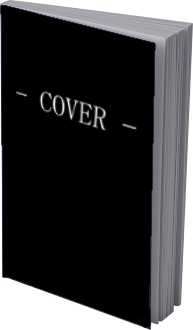Thoughts on Wanderer’s Journal
The Wanderer’s Journal began as a glimmer in an armchair historian’s eye. It was the fourth novel I ever wrote, and the first one I considered to be good.
As a person who doesn’t care for poems, it can be difficult to read old tales and mythologies. There is a children’s comic book version of the Finnish mythology, Kalevala, written and illustrated by the great Mauri Kunnas, but no novelizations exist, which makes accessing the story challenging to those not willing to parse the meaning veiled in poetry. Originally I considered writing a novelization of the Sumerian version of Inanna’s Descent to the Underworld, but then realized I would be limiting myself too much and would likely get bored in simply repeating something that was already done once. Instead, I chose to steal that tale and turn it into a heist story, a genre I much enjoy myself.
About a year before I decided to write this story, I woke up one night, asking myself the question: What was the first ever human city? After a night with little sleep, I spent the next few days researching this question only to discover it to be a difficult one indeed. After all, what counts as a city? Some argue Jericho at around 9000 BCE to be the oldest, while others point to Çatalhöyük or Mehrgahr around 7000 BCE. Yet most of these answers are unsatisfactory, as many of these stone age settlements were most likely of a temporary, seasonal, or spiritual nature rather than permanent, true cities where people lived their whole lives.
Whatever arguments one is to use, it is unlikely anyone contests Eridu in 5400 BCE being a full city, and no one denies Uruk’s status as a massive, central metropolis in 3000 BCE, in middle of the Jemdet Nasr period where Wanderer’s Journal takes place. This was the origin for my own interest in the Sumerians, as they were the first people to dominate nature itself, invent science, and begin what we today understand as a civilization. If a pre-Sumerian civilization once existed, it was likely somewhere in the present day Persian Gulf which before the end of the last ice age was still fertile land.
So many aspects of our modern lives were first invented in Sumer. This includes the obvious topics of enormous significance such as agriculture and writing, but also many trivial things that only made sense to manufacture when people lived in cities with some time for themselves. Scissors, soap, boardgames, and sheet music were all likely first created by Sumerians. However, one always risks originating inventions to these great people simply because they were to first ones to write about them. It is fully possible many human inventions existed before the Sumerians, but we merely have yet to find evidence of them.
In similar vein, much about the Sumerians and their daily lives still remains elusive to us. We know little what the average citizen believed, what they ate for breakfast, or what they spoke of during their dinners. Did they pay social calls to each other, or take breaks in middle of their days to enjoy a beer? Did they pray to the safety of their ancestors in Kur in the evenings, or were libations a thing done only on certain days? Even their origin stories are heavily fragmented, and we have to piece together their religion from the few surviving artifacts, each written in a language-isolate we have only recently begun to comprehend.
With how much of the Sumerian mythology is lost, this is what led me to create my own version of it by assuming that the future civilizations, namely Akkadians, Assyrians, Elamites, and Babylonians, got their ideas from somewhere. My belief is that all stories change form as they are passed down to future generations in a thousands of years long game of telephone, and many stories combine, forming new mythologies.
Ti’Amtum, or Tiamat, likely originates to the Babylonian Enuma Elish, and while the Sumerians make no mention of Tiamat being part of their creation myth, they do speak of the gods creating humanity and dooming it by a flood. Ishtar being a war god was likely an Assyrian reformation of the old ideas of Inanna, changed to suit their more aggressive foreign policy. In Epic of Gilgamesh, it is never fully specified what the Bull of Heaven, the monster Inanna unleashes upon Uruk, actually is, but some suggest a connection to a drought; after all, the speculated depopulation of Uruk in 3000 BCE may have been caused by a drought of unprecedented magnitude.
There is no monkey god Siriwa, nor are there nishakai demons. However, there is a mention of there existing a myriad of different types of demons and gods in the netherworld (some sources citing “60 times 60 divinities”, totaling 3600), and I took the liberty to fill the holes with something of my own creation, occasionally using the ones Sumerians did document in writing. The minority of my readers with familiarity of the mythology may find the omission of Enlil strange, but from what I understand, it was only after the Jemdet Nasr period that Enlil became a prominent part of the Sumerian religion. After all, during the Jemdet Nasr period, Enlil’s main place of worship, Nippur, may have been only a small village. Another frequent point of headaches for me was the genealogy of the Sumerian deities. With several thousand years of changes to the complicated relationships and parentages of each and every god, it is impossible to form any kind of an accurate canon about the religion.
Similarly, we don’t know if the Sumerians had a label, a name, for their religion, or what the priests and priestesses taught to the average citizens living in the shadows of their ziggurats. In the case of this story, I chose to invent a religious organization that functioned in the way I wish all world religions did today: the purpose of a religion shouldn’t be to control populations, but rather to offer people aid in understanding their own existence. The concept of the Seekers came from the idea that perhaps the Sumerian gods once provided humans the instruction manual to life, and ever since that day, humans strove to find a balance between appeasing to the gods and seeking their own happiness. And when it looked like the gods were once again on a wrathful mood, it didn’t hurt to have a special class of people whose job it was fix the problem.
The Golden City, too, is my own invention, but I may have accidentally hit close to the truth. I asked myself: how would a place be structured so that one has to walk through seven gates to reach the center? As I though about this, seven nested circles, or perhaps a spiral, made the most sense. Some suggest that the Sumerian idea of afterlife was quite different to what many current world religions teach, as, most likely, once a spirit entered the Underworld, Ereshkigal and the Anunnaki were fully indifferent to the mortal’s past life, and all would be sent to their shadow lives in Kur regardless of who they were before, or their existence would simply cease completely. Perhaps what mattered to Ereshkigal and the Anunnaki was what one made of themselves while living in Kur. In a way, this idea suggests the Sumerians believed in the Hero’s Journey, where people made mistakes across their whole lives, but eventually found the answers, continuing to live as better people. This is what Nerguiin’s story is all about.
While I was filling these gaps with what suited my own goals, I knew the 1% of my readers with knowledge of ancient Mesopotamia would be suffering aneurysms from all the historical inaccuracies, but then I realized what I was doing was far from original: many others have combined and changed mythologies to create their own ones. The lore of the video game series Diablo is heavily based on the Abrahamic religions, but when the story so demands, they immediately diverge in a direction that allows them to write an engaging story of their own. In Indiana Jones the religious artifacts are often used as nothing more than MacGuffins the characters wish to acquire. In La-Mulana we explore the histories of most ancient civilizations only to discover all of them to be false in some way, or rather, each being a lens to the true, original history that preceded them all. This is what I chose to do with my novel as well.
Please send your complaints to the Assyriologist of your choice. I’m sure they’ll love someone taking an interest in their work.


